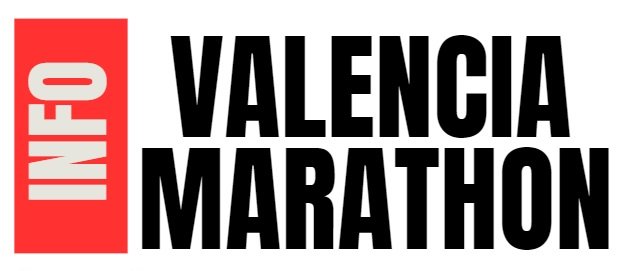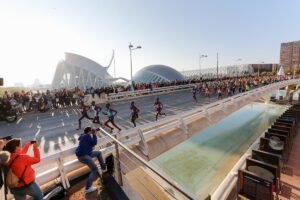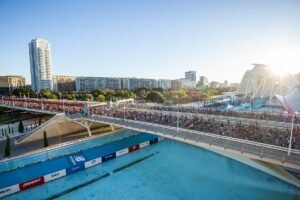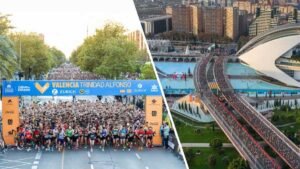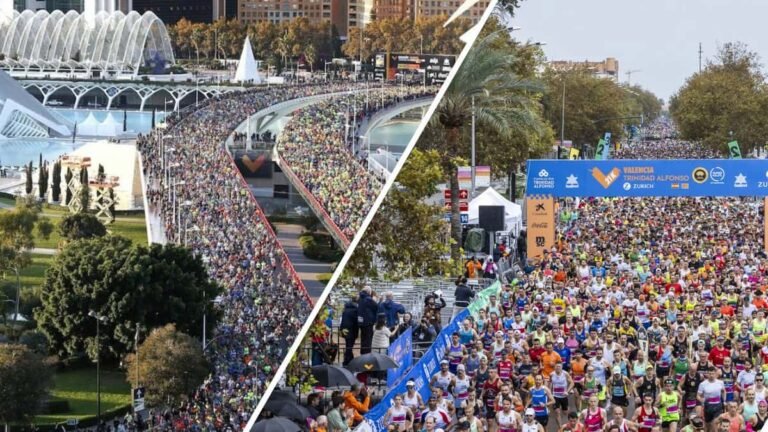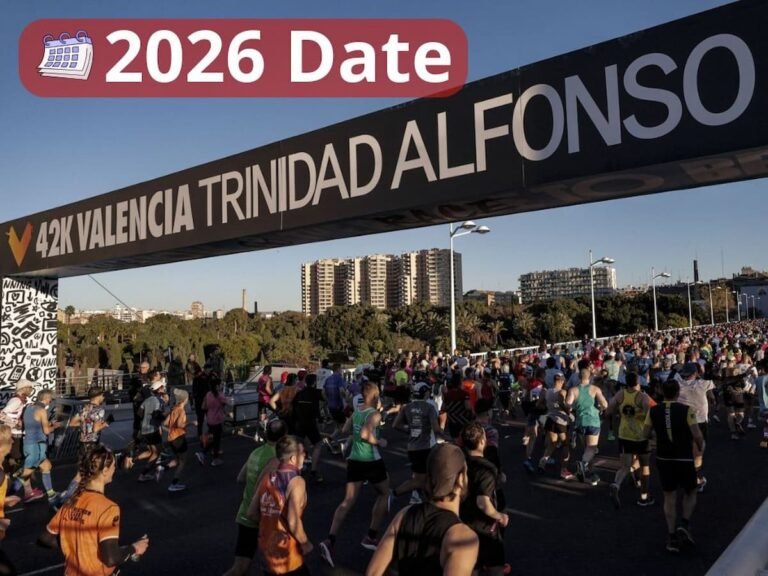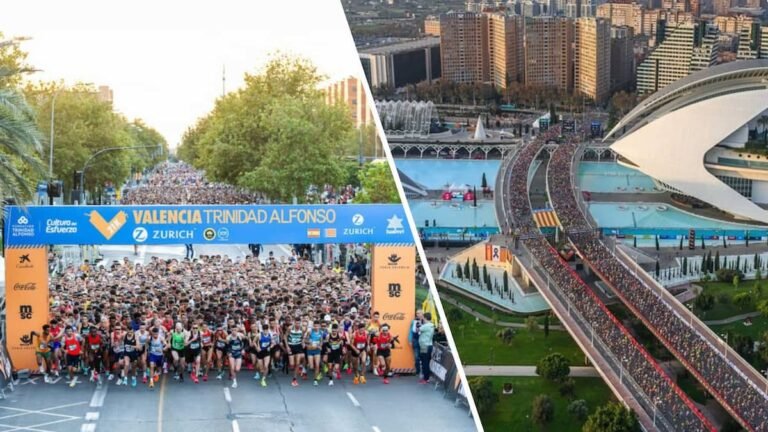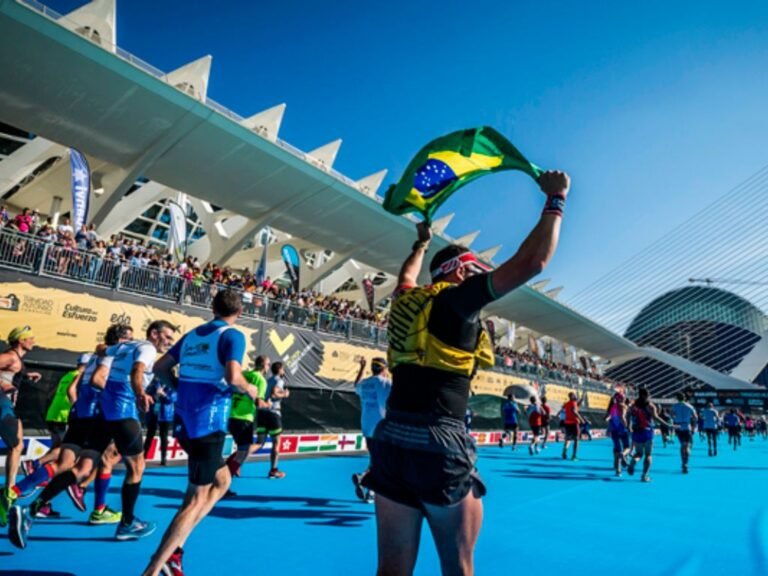The DANA that struck eastern Spain on October 29th has left serious consequences throughout the Valencian Community. With irreparable human losses and significant damage to infrastructure, the city of Valencia and its surrounding areas are trying to recover while doubts linger about the feasibility of massive events like the Valencia Marathon, scheduled for December 1. Although the marathon’s urban course appears undamaged, the primary access routes to the city and crucial transport services are severely affected, jeopardizing the logistics of hosting over 30,000 runners and the thousands of visitors the event attracts annually.
Damage Caused by the DANA and Its Impact on Valencia
The aftermath of the DANA has left heartbreaking scenes across Valencia and neighboring provinces. Flooded streets, damaged bridges, and power outages are just some of the consequences that have forced residents to drastically change their routines. Torrential rains and flooding have not only affected rural or coastal areas; they have also impacted strategic locations near the capital.
To put the severity into perspective, events like the Cheste Motorcycle Grand Prix, which was scheduled to take place in two weekends Ricardo Tormo Circuit, have already been canceled due to the level of destruction around access routes and logistical difficulties. The Valencia Marathon organizers have not yet issued an official statement about a potential cancellation, but uncertainty looms large.
This crisis also threatens the city’s economy, which heavily benefits from the sports tourism generated by the marathon. But before drawing any final conclusions, let’s take a detailed look at how current conditions are affecting both infrastructure and the race course itself.
Status of the Race Course and Affected Areas Around the Marathon
Fortunately, the streets that make up the iconic Valencia Marathon route —with its start and finish at the City of Arts and Sciences and segments along the old Turia riverbed— show no visible damage. This could be a positive point for the organizers. However, peripheral areas and access routes to the city remain in critical condition.
The situation worsens with closed roads throughout the province, such as the A-3 and N-3, which connect Valencia with Madrid, along with other stretches of the V-30 and A-7 that have either been rendered unusable or are experiencing partial closures. The interurban transport network is overwhelmed and compromised by landslides and extensive flooding. In light of this, the challenge is not only to ensure runner safety but also to guarantee that participants can arrive in the city and move around normally during the marathon weekend.
This issue is directly linked to the broader transportation difficulties, which we’ll discuss next.
Current Situation of Transport: Trains, Buses, and Flights
The chaos affecting transport infrastructure in the Valencian Community is immense. Currently, five Cercanías train lines that connect Valencia with nearby cities remain out of service. High-speed connections, vital for visitor traffic from Madrid and Barcelona, are indefinitely suspended. Renfe has announced that these disruptions will impact trains departing from or arriving at Joaquín Sorolla station, presenting a major complication for travel plans of participants and their companions.
Additionally, train companies like Ouigo and Iryo have also canceled their services, with limited efforts to rebook passengers on other dates. Bus connections from operators such as Alsa and Avanza have likewise been halted, making it difficult to reach Valencia from various points across the peninsula.
Manises Airport has also been affected, with 30 flight diversions and 49 cancellations reported as of Tuesday, October 31st. Airlines, in coordination with Aena, are working to rebook passengers, but the situation remains uncertain. Authorities strongly advise against traveling to Valencia by car, raising questions about how event logistics will be managed if conditions don’t improve.
With so many complications, what are the authorities saying, and what measures are they considering for the upcoming days?
Authorities’ Opinions and Possible Scenarios for the Event
The Government Delegation and the Generalitat Valenciana have urged the public to avoid unnecessary travel to prevent overwhelming the remaining roads that are still available for emergency services. They have called for maximum caution and cooperation with rescue and maintenance teams.
The Valencia Marathon organizers, in collaboration with the City Council and security forces, are continuously assessing infrastructure status and weather forecasts. While a cancellation has not been ruled out, other alternatives are being considered. A potential relocation of the event is on the table, though this would be complicated given the magnitude of the race and the tight calendar. Juan Roig himself visited some of the affected areas on foot to witness the disaster’s impact firsthand.
With just over a month to go, the decisions made in the coming days will be crucial in determining the marathon’s future. Meanwhile, fans and athletes from around the world look to Valencia with both concern and hope, eagerly awaiting news that might ensure this eagerly anticipated event goes ahead.
